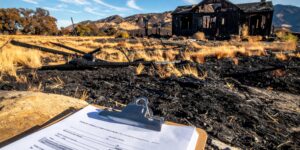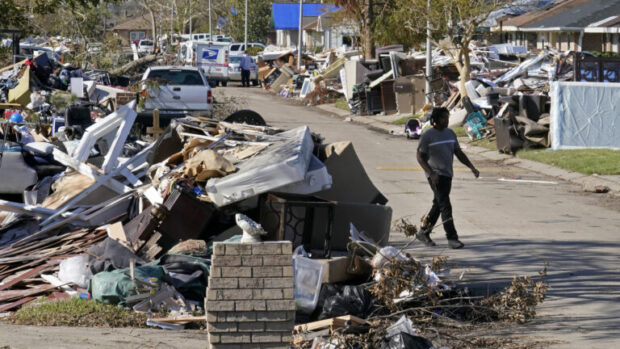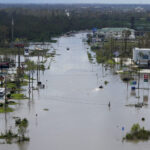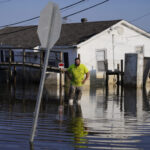Hurricane Ida will likely become one of the costliest U.S. mainland hurricanes on record both on a nominal and inflation-adjusted basis, according to Aon’s monthly Global Catastrophe Recap report, which evaluated the impact of natural disaster events worldwide during August 2021.
The report said total direct economic losses from Hurricane Ida were anticipated to reach well into the tens of billions of dollars. “While a sizable portion of the economic damage due to coastal and inland flooding was not expected to be insured, public and private insurance entities were still likely to have exposures into the double-digit billions [of dollars],” said the report.
Hurricane Ida made landfall in the U.S. as a 150 mph (240 kph) Category 4 storm near Port Fourchon, La., on August 29, killing at least 77 people. Ida caused extensive wind, storm surge and inland flood damage across the Southeast before its remnants later resulted in exceptional flash flood damage and convective storm impacts in the mid-Atlantic region and Northeast on Sept. 1.
Another major catastrophe during the month was the major and deadly earthquake, which struck the Tiburon Peninsula of Haiti on Aug. 14, killing at least 2,207 people and injuring 12,268 others. The magnitude-7.2 tremor had an epicenter 13 kilometers (8 miles) south-southeast of Petit Trou de Nippes. The quake left nearly 140,000 structures damaged or destroyed in the Sud, Nippes, and Grand’Anse Departments alone. Government officials unofficially estimated $3 billion in economic damage, with most losses uninsured.
“As larger-scale disasters occur with more intensity and subsequently result in greater impacts, this has put a spotlight on areas where gaps lie in humanitarian and insurance protection. This is true regardless of whether a country is identified as developed or emerging,” according to Steve Bowen, managing director and head of Catastrophe Insight on the Impact Forecasting team at Aon.
“Hurricane Ida’s catastrophic impacts in the United States highlighted how much work is yet to be done to better insure around inland and coastal flooding,” he added. “An even greater gap is found in Haiti following the major earthquake that once again has the country facing a challenging recovery. How governmental bodies work with private sector groups to improve hazard protection and aim to better and more smartly rebuild will be key to lowering future natural peril risk.”
Further natural hazard events that occurred across the globe in August include:
- The worst drought in 91 years continued to affect Brazil, notably in the Paraná River region, which substantially affected the agricultural sector. The Department of Agriculture cited up to 11 billion Brazilian real ($2.1 billion) in damage to the corn crop alone due to drought and recent bouts of frost. The overall direct economic impact was anticipated to be even higher.
- Major wildfires burned in Greece from late July into early August, causing significant property and environmental damage. The largest fires burned in northwestern Evia, north of Athens in Attika and in Peloponnese. Two people were killed, and hundreds of homes were damaged or destroyed.
- The Caldor Fire in El Dorado County, Calif. was ignited on Aug 13 and burned into early September. The fire burned more than 215,000 acres (87,000 hectares) and destroyed at least 920 structures (including 712 homes and 18 commercial properties). Total economic losses were minimally estimated into the hundreds of millions of dollars.
- In eastern Washington state, the Ford Corkscrew Fire was ignited on Aug. 15 and destroyed at least 143 homes and other structures. Total economic losses to property and the timber industry were estimated beyond $100 million.
- Severe flash flooding and landslides, triggered by heavy rainfall, caused significant damage in the Bartin, Kastamonu and Sinop provinces of Turkey’s Black Sea Region on Aug. 11, claiming 82 lives. The worst-affected districts were Ulus in Bartin; Azdavay, İnebolu, Bozkurt, Küre and Pınarbaşı in Kastamonu; and Ayancık in Sinop. More than 1,300 residents were evacuated to safety. Total economic losses are expected to exceed $100 million.
- Dozens of wildfires erupted in northern Algeria amid a scorching heatwave in early August, as temperatures rose above 46°C (115°F) and extremely dry conditions aided in their spread. Among the worst hit was Kabylia region. The event claimed 90 lives, including 57 civilians and 33 soldiers.
- Continued seasonal monsoon rainfall led to nearly 50 additional fatalities across China in August. The worst floods were occurred in southern Shaanxi, Sichuan Basin and the middle reaches of the Yangtze River. Total economic losses to property, infrastructure and agriculture in August tallied CNY17 billion ($1.65 billion). The annual seasonal flood total rose to at least $27 billion.
Source: Aon’s Impact Forecasting
Photograph: Lyndell Scott walks past the debris of his gutted home in the aftermath of Hurricane Ida in LaPlace, La., on Friday, Sept. 10, 2021. With almost all the power back on in New Orleans nearly two weeks after Hurricane Ida struck, the city shows signs of making a comeback from the Category 4 storm. Photo credit: AP Photo/Gerald Herbert.
*This story ran previously in our sister publication Insurance Journal.





















 McKinsey Plots Thousands of Job Cuts in Slowdown for Consulting Industry
McKinsey Plots Thousands of Job Cuts in Slowdown for Consulting Industry  Executives on the Move at HSB, American Modern Insurance Group, AIG
Executives on the Move at HSB, American Modern Insurance Group, AIG  How Carriers Are Pairing AI and Process Discipline to Drive Subrogation Outcomes
How Carriers Are Pairing AI and Process Discipline to Drive Subrogation Outcomes  The Hardest Part of Innovation in Insurance Isn’t Technology; It’s Culture
The Hardest Part of Innovation in Insurance Isn’t Technology; It’s Culture 




